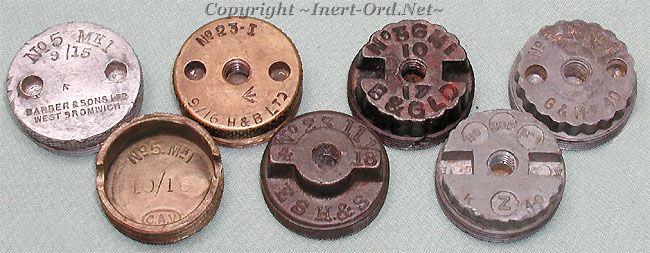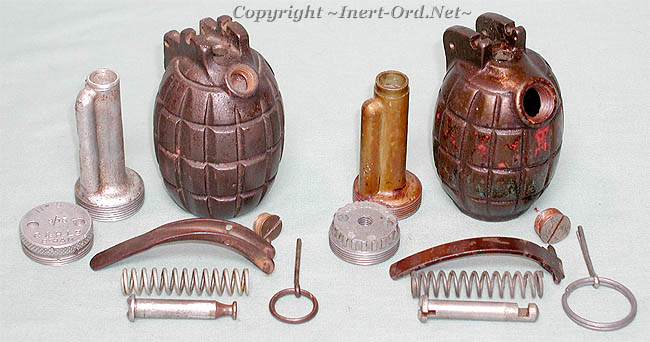
The grenade number was changed to indicate overall functionality.
No.5 - For hand use only.
No.23 - Rod grenade capability, by changing the base plug, and developing an appropriate launching cradle (cup).
No.36 - Modified for cup launching, another base plug change, along with the creation of a suitable cup discharger.
Internal and external mechanical components underwent many modifications. Some were associated with a particular Number or Mark, others changed independently during the course of production.
Early grenades, No.5 and No.23 Mk.I & II (left) are easily distinguished from the later No.23 Mk.III and No.36 (right) by examining the top features of the grenade body. Note the striker head style as well.
The No.5, 23 and 36 were all developed during WWI. Only the No.36 saw service in WWII.
Alternate Body Casting

Look closely at the dates on the base plugs shown above. You can see a No.23 Mk.I with a September 1916 date, yet below that is an earlier No.5 Mk.I with a later October 1916 date. Same goes for the Mo.36 Mk.I dated 10/17 compared to the No.23 Mk.III with a April 1918 date. This is likely the result of changes not being implemented by factories in the order of official design approval, to avoid disruption in grenade output. There are about two hundred different base plug markings, a collecting field in itself.
For an issued Mills grenade, the base plug identified a particular type and its mark. Unfortunately they are all interchangeable, from beginning to end of production. From a collector's perspective, using only the base plug to identify a specific grenade assembly is no guaranty of authenticity.

A comparison of parts for the No.5 (left) and No.36 (right).
The majority of overall design changes to the Mills Bomb occurred during the first two years of Mills bomb development and were mostly to lower cost of production.
Continued ...